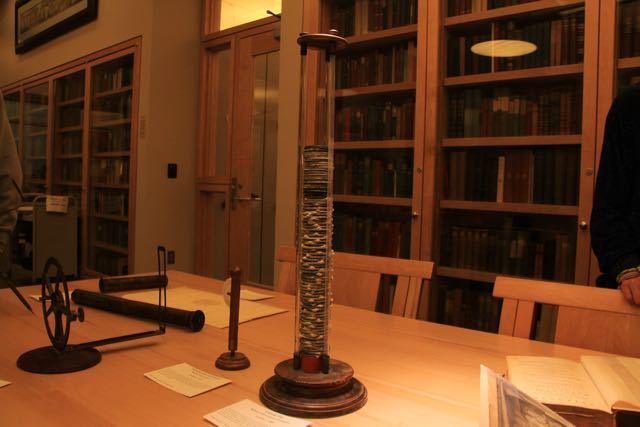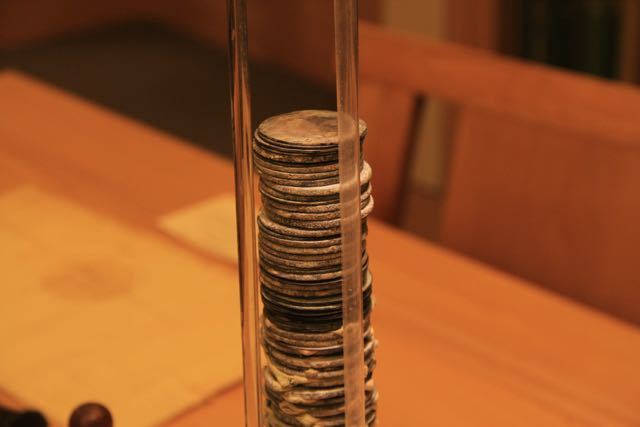What was the voltaic pile doing with Fredrick Hall?
As a professor, Frederick Hall probably used the voltaic pile as a component of his science courses, particularly chemistry class. By utilizing a voltaic battery in labs, Hall could have taught electrochemistry in the Natural Philosophy class, offered in an 1818 Middlebury course catalog.
Using the voltaic pile, experimenters were able to create new pathways in scientific fields, leading to the discovery of “electrolysis of water” as well as researching the “electric arts” (Edwards, 2). Though there is no explicit proof of Hall using the voltaic pile for such experiments, famous 19th-century scientist Alexander Von Humboldt came across the plates and their inventor in his journeys throughout the world (Finger, 22). In fact, Humboldt actually met Alexander Volta in 1805. The two reportedly discussed an “electrical framework for understanding nerve and muscle physiology” as well as other applications for the archaic battery (Finger, 22). Before the voltaic pile, some researchers (including Humboldt) began experimenting with the so-called “animal energy”, which was “electricity” sourced from living organisms. (Wulf, 71) The voltaic pile proved that electricity could be created without an organic source, creating a new wave of electrical inquiries propelling electrical science into the 19th-century.

